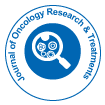Angiogenesis in Regenerative Medicine: Building New Vessels for Healing
Received: 01-Jan-2024 / Manuscript No. AOT-24-126619 / Editor assigned: 05-Jan-2024 / PreQC No. AOT-24-126619 (PQ / Reviewed: 19-Jan-2024 / QC No. AOT-24-126619 / Revised: 26-Jan-2024 / Manuscript No. AOT-24-126619 (R) / Published Date: 05-Feb-2024
Description
Angiogenesis, the process of new blood vessel formation, holds a central role in regenerative medicine as a key orchestrator of tissue repair and healing. The complex process of angiogenesis involves the sprouting of new blood vessels from existing ones, a phenomenon critical for delivering oxygen, nutrients, and immune cells to regenerating tissues. In this article, we explore the pivotal role of angiogenesis in regenerative medicine, the mechanisms underlying vascular growth, and the transformative potential it holds for enhancing healing in a variety of medical contexts.
The fundamental role of angiogenesis in regeneration
Oxygen and nutrient delivery: Angiogenesis is essential for ensuring an adequate supply of oxygen and nutrients to regenerating tissues. As damaged tissues seek to repair and rebuild, the demand for oxygen and nutrients increases. New blood vessels, formed through angiogenesis, provide the necessary conduits for delivering these vital resources, encouraging an environment conducive to healing.
Waste removal: In addition to supplying oxygen and nutrients, angiogenesis facilitates the removal of waste products generated during the regenerative process. Efficient waste removal is crucial for maintaining a clean and supportive microenvironment, allowing cells involved in tissue repair to function optimally.
Cellular communication: Angiogenesis involves intricate signaling pathways that facilitate communication between various cell types. Endothelial cells, which form the inner lining of blood vessels, interact with surrounding cells, including fibroblasts and immune cells, to coordinate the regenerative response. This cellular crosstalk is vital for orchestrating the complex processes involved in tissue repair.
Mechanisms of angiogenesis in regenerative medicine
Vasculogenesis vs. Angiogenesis: While angiogenesis primarily involves the sprouting of new vessels from existing ones, vasculogenesis is the de novo formation of blood vessels from precursor cells. In regenerative medicine, both processes play complementary roles, with angiogenesis often dominating during tissue repair and vasculogenesis contributing to the generation of new vascular structures.
Angiogenic factors: Various growth factors and signaling molecules drive angiogenesis. Vascular endothelial growth factor Vascular Endothelial Growth Factor (VEGF) stands out as a primary driver, promoting endothelial cell proliferation and migration. Other factors, such as Fibroblast Growth Factor (FGF) and angiopoietins, contribute to the orchestration of angiogenesis, influencing vessel maturation and stability.
Endothelial cell activation: The activation of endothelial cells is a critical step in angiogenesis. Under the influence of angiogenic factors, endothelial cells undergo changes in morphology and behavior, enabling them to sprout, migrate, and form new blood vessels. This activation process is tightly regulated, ensuring a controlled and effective response.
Applications of angiogenesis in regenerative medicine
Wound healing: Chronic wounds, often characterized by impaired blood supply, represent a significant clinical challenge. Angiogenesis plays a central role in wound healing by promoting the formation of new blood vessels around the wound site. Therapies that enhance angiogenesis, such as growth factor treatments or biomaterial scaffolds, hold promise for accelerating wound closure and reducing the risk of complications.
Cardiac regeneration: Following a myocardial infarction, the heart faces the challenge of repairing damaged tissue and restoring normal function. Angiogenesis is crucial in this context, as it promotes the formation of blood vessels in the injured cardiac tissue. Strategies to enhance angiogenesis, including stem cell therapies and gene therapies, aim to improve the regenerative capacity of the heart after an infarction.
Orthopedic regeneration: In orthopedic applications, such as bone and cartilage regeneration, angiogenesis is vital for providing the necessary blood supply to support the growth of new tissues. Biomaterials, growth factors, and cellular therapies are being explored to promote angiogenesis and enhance the success of regenerative approaches in orthopedic medicine.
Neurological regeneration: In the central nervous system, where the regenerative capacity is limited, angiogenesis plays a critical role in supporting neuronal repair. Strategies to enhance angiogenesis in neuroregeneration include the use of neurotrophic factors, stem cell therapies, and bioengineered scaffolds. These approaches aim to create a conducive microenvironment for neural tissue repair.
Challenges and future directions
Temporal and spatial control: Achieving precise control over the timing and location of angiogenesis is a challenge in regenerative medicine. Ensuring that new blood vessels form in a coordinated manner, without excessive or insufficient vascularization, is crucial for optimal tissue repair. Research efforts are focused on developing strategies to fine-tune the temporal and spatial aspects of angiogenic responses.
Integration with other regenerative modalities: Regenerative medicine often involves a combination of approaches, including stem cell therapies, biomaterials, and growth factor treatments. Integrating angiogenesis-promoting strategies with other regenerative modalities requires a deep understanding of the complex interactions between different components. Achieving synergistic effects while minimizing potential conflicts remains an ongoing challenge.
Personalized approaches: The effectiveness of angiogenic therapies may vary among individuals due to genetic, environmental, and health factors. Personalized approaches that consider the unique characteristics of each patient, including their genetic makeup and overall health status, are critical for optimizing regenerative outcomes.
Conclusion
Citation: Li H (2024) Angiogenesis in Regenerative Medicine: Building New Vessels for Healing. J Oncol Res Treat. 9:255
Copyright: © 2024 Li H. This is an open-access article distributed under the terms of the Creative Commons Attribution License, which permits unrestricted use, distribution, and reproduction in any medium, provided the original author and source are credited.
Share This Article
Open Access Journals
Article Usage
- Total views: 669
- [From(publication date): 0-2024 - Apr 02, 2025]
- Breakdown by view type
- HTML page views: 486
- PDF downloads: 183
